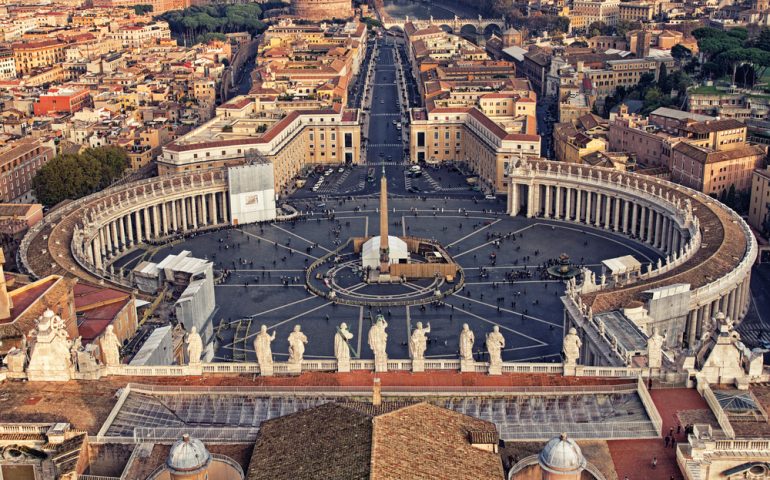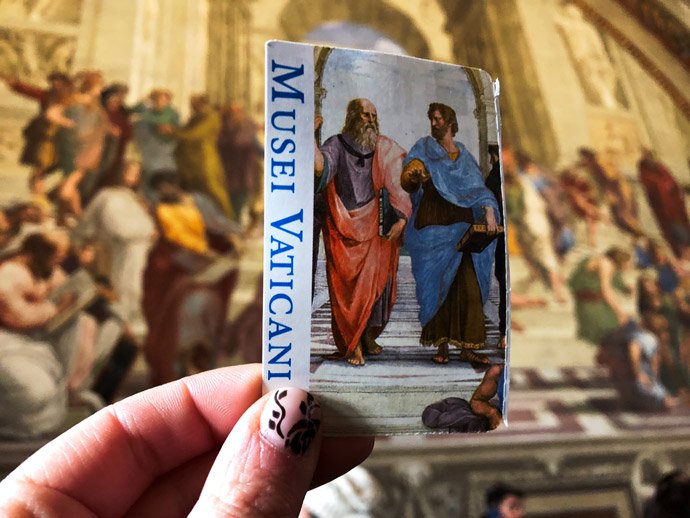The obelisk of St. Peter’s Square
Did you know the obelisk of St. Peter’s Square arrived from Egypt on a ship loaded with lentils. Because? The obelisk of St. Peter’s Square (also called the Vatican obelisk), undoubtedly one of the most famous in the world, is much older than the square itself. It is the only ancient obelisk in Rome that has never fallen and has been the protagonist of many curious historical anecdotes. Let’s find out together.

It was transported to the times of Emperor Caligula from Heliopolis in Egypt to then be placed in the center of Nero’s circus, which previously was exactly where St. Peter’s Square now stands. On his journey from Africa, to prevent it from breaking, he was transported to Rome on a ship loaded with lentils.
The Vatican Obelisk is one of the thirteen ancient obelisks of the Eternal City.
Made of red granite, it stands out to a height of 25.3 meters and with the base (made up of four bronze lions, works by Prospero Antichi) and the cross reaches almost 40 meters. The inscription reads: ECCE CRUX DOMINI – FVGITE – PARTES ADVERSAE – VICIT LEO DE TRIBV IVDA, that is, in Italian: “Here is the cross of the Lord, flee adverse parties, the lion of the tribe of Judah triumphs”.
As mentioned, it is of Egyptian origin, has no hieroglyphics and comes, according to Pliny, from the city of Heliopolis; first it was placed in the Forum Iulii of Alexandria in Egypt and later it was brought to Rome by Caligula in 40, and placed on the spine of the Circus of Nero. It remained in this position even after the circus fell into disuse, occupied by a necropolis. He then found himself next to the ancient basilica of St. Peter, near the Rotonda di Sant’Andrea.

It was moved and raised at the behest of Pope Sixtus V in the summer of 1586 under the direction of the architect Domenico Fontana who took four months of work to complete the work, 900 men, 75 horses and 40 winches: it was the first of the obelisks to be raised in the modern era. An imposing scaffolding was built, from which instructions were given to the workers with trumpets and drums: total silence was imposed throughout the square, so as not to disturb the work, and offenders would be severely punished.
In the lifting operations that took place on 10 September 1586 there was the famous cry of a certain Benedetto Bresca: “Water on the ropes!”, Who noticed that the ropes, overheated, were dangerously about to give way under the great weight of the obelisk. The man was rewarded and his family was entrusted with the task of providing the Holy See with palm trees for all religious holidays.

Since 10 September 1586 it has stood out in the square, like a huge finger pointing to the sky, reminding us that everyone’s destiny lies in the House of the Lord.
On the occasion of the move, the globe placed on the summit was transferred to the Capitoline Museums, in the first room of the Palazzo dei Conservatori, in a corner near the large window. According to legend, the globe from which it was surmounted contained the ashes of St. Peter or Caesar; from the Caesarean reference to the Roman imperial eagle derives the term garfish, initially used only for obelisks, and today transformed into a spire.
BOOK YOUR VATICAN MUSEUM TOUR

